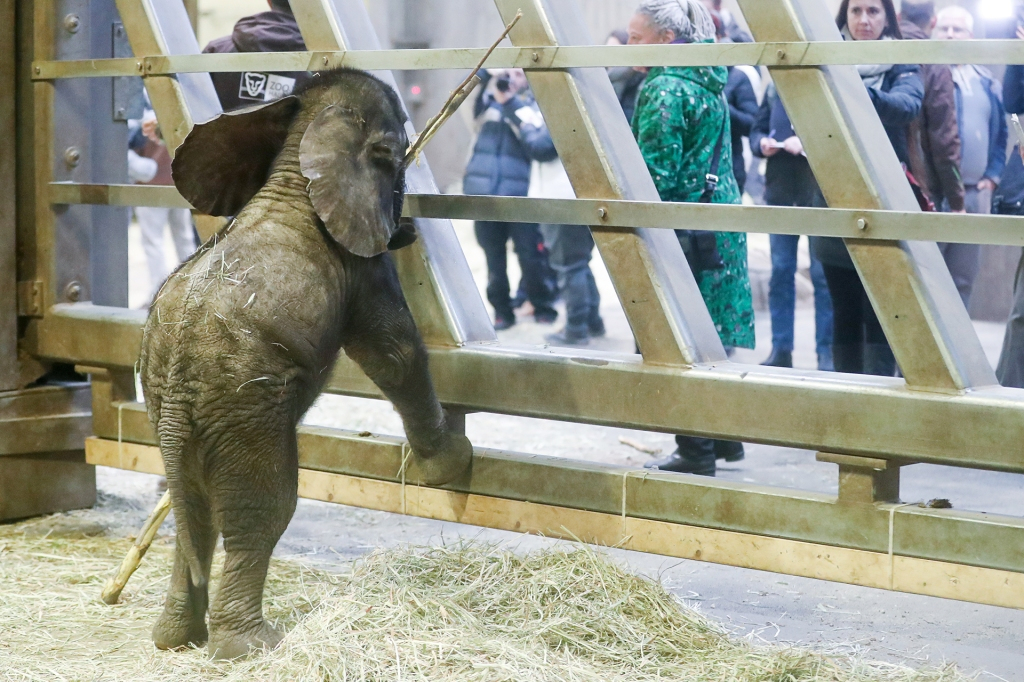
It’s a sunny afternoon at the Bronx Zoo, in New York City. A monorail train approaches the elephant exhibit. A child screeches in delight as a female Asian elephant named Happy comes into view, flapping her ears and wrapping her trunk around the fence of her enclosure.
The Bronx Zoo is one of about 60 zoos in the United States where you can see an elephant. With the number of Asian elephants dwindling every year—about 50,000 are left in the wild—a zoo might be the only chance any of us will ever get to see one.
But the Nonhuman Rights Project (NhRP), an animal-rights group, says Happy is lonely. A fence separates her from Patty, another elephant. Contact with another elephant through a fence isn’t enough, the NhRP says. “We understand what [Happy’s] life means to her,” says Steven Wise, the group’s president, “which is almost nothing at all.”
So the NhRP is taking the Bronx Zoo to court to get Happy moved to a sanctuary, where she can have space to roam and interact with other elephants.
On the Case
The NhRP’s case against the Bronx Zoo is the first of its kind in the U.S. The group is relying on a legal order that says a person who has been unlawfully imprisoned must be released. Next year, the NhRP will argue in court that Happy should have that same right.
There’s research to support that argument. In 2005, Happy became the first Asian elephant to pass a mirror test, which is given to see if an animal can recognize itself, the way a person does.
Experts say elephants are intelligent and thrive when they form social bonds. Joyce Poole, who studies them in Africa, says keeping one in a city is “a recipe for disaster.” “As you can imagine, if you were locked behind bars, there’s not much to do,” she says.
The Zoo’s View
The Bronx Zoo says Happy is well cared-for, and was separated from Patty because the two didn’t get along. Some people claim removing animals like Happy from zoos would be a mistake, as many kids would never grow up with a connection to these animals.
Jodi Gibson, the president of the Zoological Society of Milwaukee, first saw elephants at a zoo when she was 6. “For me, as a child, it opened a door,” she says. “Our greatest hope is for people to want to protect and preserve these beautiful animals.”
According to the Association of Zoos and Aquariums (AZA), some 55 million schoolchildren visited zoos each year before the coronavirus pandemic.
Even so, attitudes about animal parks are changing. In 2015, SeaWorld made moves to end its killer-whale shows. Park attendance had dropped after SeaWorld was criticized for keeping killer whales in captivity.
But zoos reach more people than any other group involved with conservation. They’re more important than ever, AZA president Dan Ashe says. He feels that if there’s a time when children can no longer visit zoos and learn to care about elephants, “It’ll come at a great cost.”
Other Court Cases
In 2014, the Supreme Court of India made waves when it said animal rights are protected under the nation’s constitution. As it banned a bullfighting festival, the court wrote that animals have the right to “live in a healthy and clean atmosphere.” That same year, a court in Argentina ruled that an orangutan named Sandra could be freed from a zoo. The ruling was later reversed. But Sandra was still moved to a sanctuary in Florida.
Power Word Definitions
sanctuary (noun): a safe place
conservation (noun): the preservation and protection of something



 About BeeLine
About BeeLine